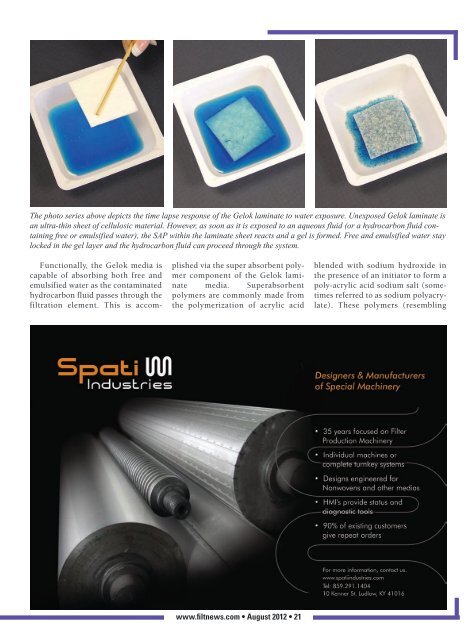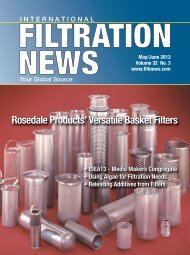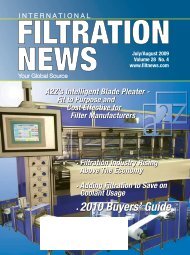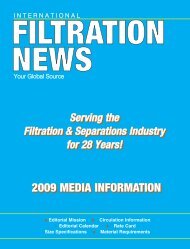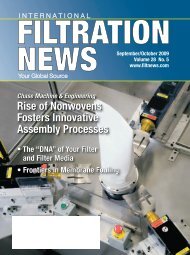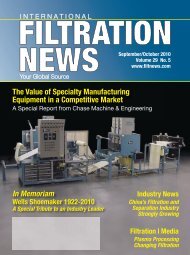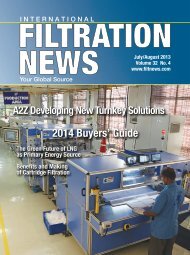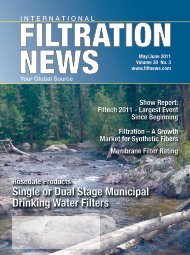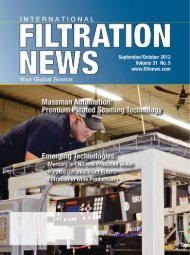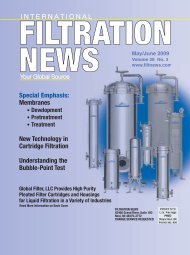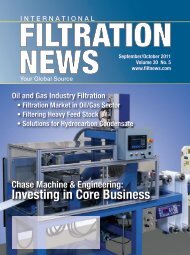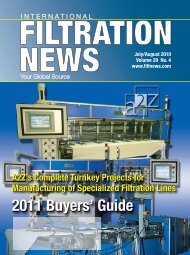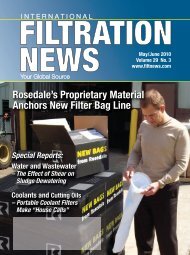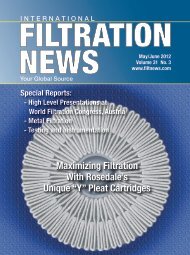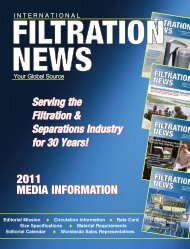2013 Buyers' Guide 2013 Buyers' Guide - Filtration News
2013 Buyers' Guide 2013 Buyers' Guide - Filtration News
2013 Buyers' Guide 2013 Buyers' Guide - Filtration News
Create successful ePaper yourself
Turn your PDF publications into a flip-book with our unique Google optimized e-Paper software.
The photo series above depicts the time lapse response of the Gelok laminate to water exposure. Unexposed Gelok laminate is<br />
an ultra-thin sheet of cellulosic material. However, as soon as it is exposed to an aqueous fluid (or a hydrocarbon fluid containing<br />
free or emulsified water), the SAP within the laminate sheet reacts and a gel is formed. Free and emulsified water stay<br />
locked in the gel layer and the hydrocarbon fluid can proceed through the system.<br />
Functionally, the Gelok media is<br />
capable of absorbing both free and<br />
emulsified water as the contaminated<br />
hydrocarbon fluid passes through the<br />
filtration element. This is accomplished<br />
via the super absorbent polymer<br />
component of the Gelok laminate<br />
media. Superabsorbent<br />
polymers are commonly made from<br />
the polymerization of acrylic acid<br />
blended with sodium hydroxide in<br />
the presence of an initiator to form a<br />
poly-acrylic acid sodium salt (sometimes<br />
referred to as sodium polyacrylate).<br />
These polymers (resembling<br />
www.filtnews.com • August 2012 • 21


